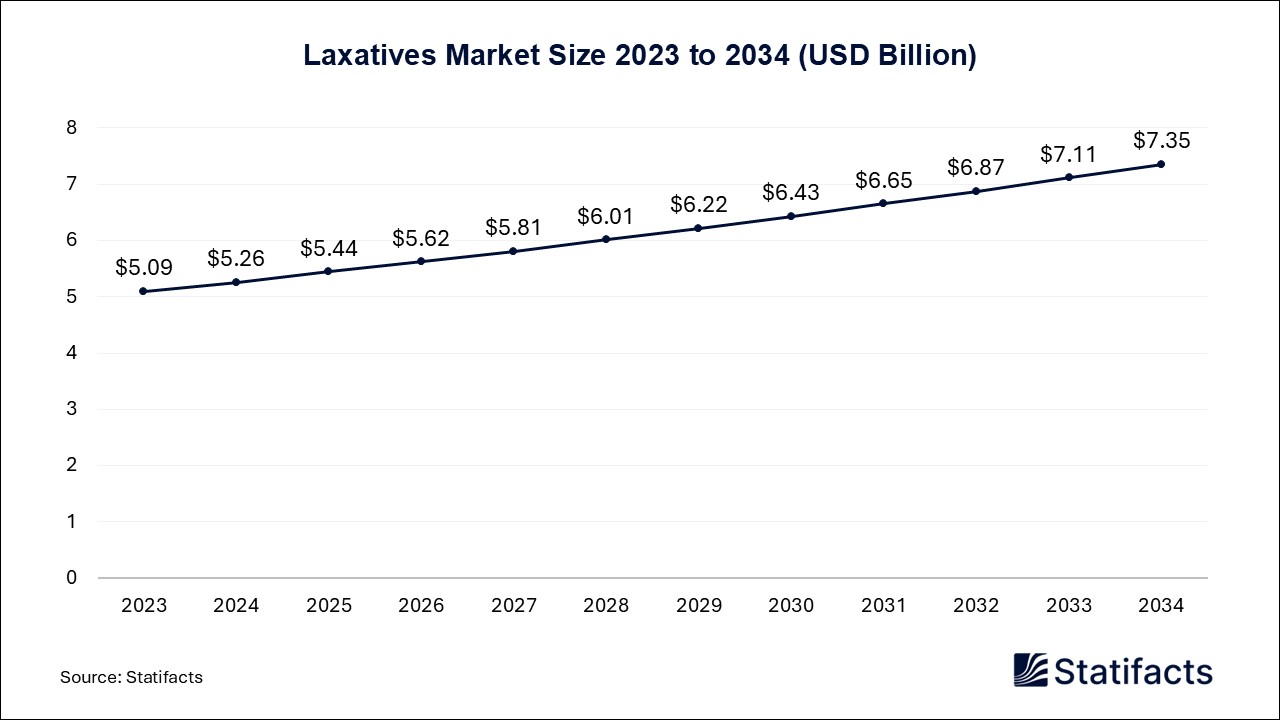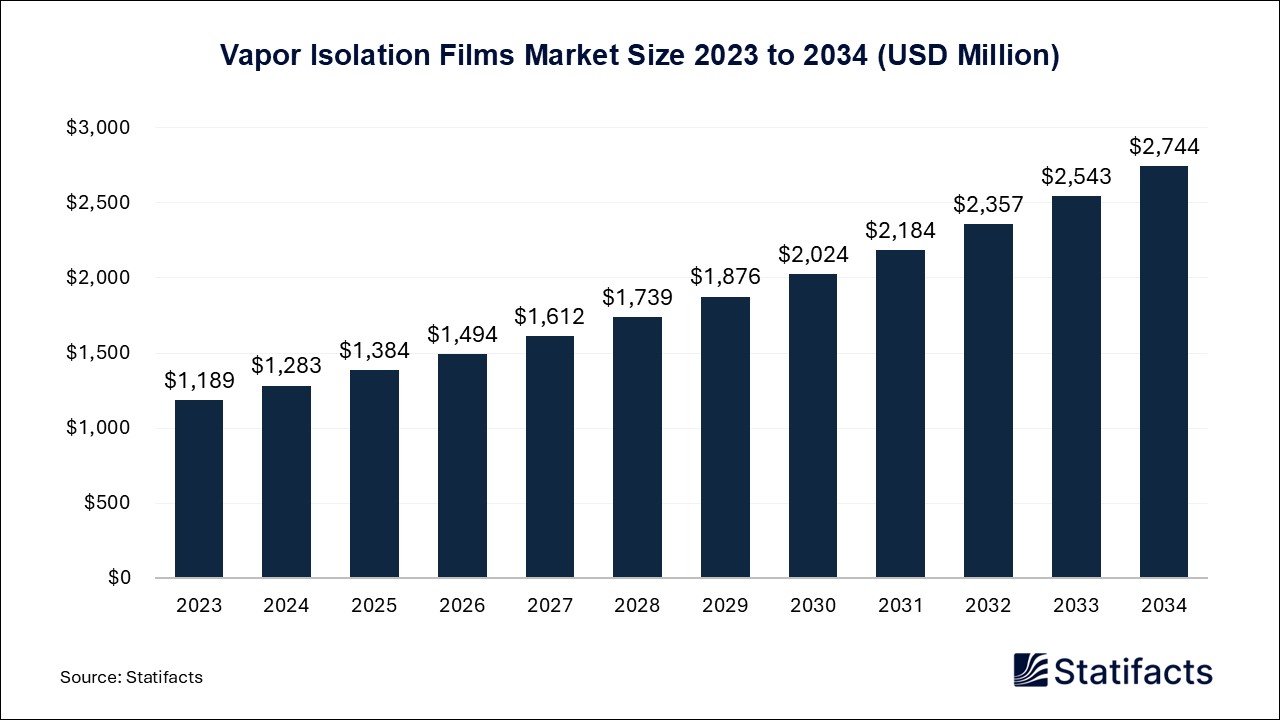Last Updated: 29 Jul 2025
Source: Statifacts
By clicking “Accept All Cookies” you agree to the storing of cookies on your device to enhance site navigation, analyze site usage, and assist in our marketing efforts.
Privacy PolicyThe global orthopedics market size was evaluated at USD 27.45 billion in 2024 and is expected to grow around USD 101.87 billion by 2034, registering a CAGR of 14.01% from 2025 to 2034. The growth of the global market for orthopedics is being accelerated by an aging population, increasing incidence rate of musculoskeletal conditions, and numerous advancements in implants and surgical devices. North America has the largest orthopedic market size, while Asia Pacific is the fastest-growing region in widening orthopedic usage from higher healthcare expenditure and greater access to orthopedic care.
| Reports Attributes | Statistics |
| Market Size in 2024 | USD 27.45 Billion |
| Market Size in 2025 | USD 31.06 Billion |
| Market Size in 2032 | USD 77.27 Billion |
| Market Size by 2034 | USD 101.87 Billion |
| CAGR 2025 to 2034 | 14.01% |
| Base Year | 2024 |
| Forecast Period | 2025 to 2034 |
The orthopedics market consists of a variety of medical devices, implants, and surgical instruments specifically for the diagnosis and treatment of diseases affecting bones, joints, ligaments, and muscles. Orthopedic solutions are applied in a multitude of settings, including hospitals, orthopedic clinics, ambulatory surgical centers, and rehabilitation facilities. The orthopedic market also supports a number of healthcare sectors, but particularly geriatrics, sports medicine, and trauma. Global demand for joint replacements continues to increase, driven by an aging population and sedentary lifestyles, which support the market for orthopedics. In fact, in the United States alone, there are over 1 million knee replacements performed each year, which illustrates the volume of orthopedic procedures. The rapid growth of minimally invasive surgical techniques is a causative factor of market growth, as well as a major increase in musculoskeletal injury numbers due to sports and accidents.
Artificial Intelligence (AI) is innovating orthopedics by enhancing preoperative planning, diagnosis, and personalized treatment paths. For instance, a machine learning algorithm analyzes an MRI and/or CT scan to assist with planning an outcome and optimally position the implant. AI and machine learning allow for real-world analysis of patient progress through rehabilitation or "motion tracking" used in conjunction with wearables; utilizing these technologies can provide real-time intervention for the betterment of the patient's recovery course of action. New technologies should provide clinical improvement in outcomes and overall decrease in recovery time of our patients, which translates to decreased costs to the healthcare umbrella in its totality.
The orthopedics market is primarily influenced by a globally growing geriatric population and rising osteoarthritis cases, combined with advancements in orthopedic implants and surgical technologies, which are driving strong global demand for innovative, efficient orthopedic solutions.
Rising geriatric population and prevalence of osteoarthritis
The global population is aging rapidly, which has a major positive effect on the orthopedics market since older adults seem to be more affected by degenerative bone diseases (i.e., osteoporosis and osteoarthritis). Due to the wear and tear that is associated with aging cartilage, elderly patients are increasingly desiring surgical interventions to improve their mobility and bring them relief from pain. All the stress of age-related conditions is putting pressure on a healthcare system to take a more innovative approach, or approach with orthopedic systems and solutions that will allow for fast recovery times and cost saving, while meeting the demands of older adults, which has increased demand on the market.
Technological advancements and surgical techniques
Orthopedic implants are continuously innovating, such as biocompatible materials, 3D-printed customized implants, and other similar technologies, leading to rapid growth in the market. The evolving technologies, along with other advancements, have improved implant longevity, reduced the risk of infections, and enabled a better fit for the anatomy. Image-guided surgeries and robotic-assisted surgery are also improving surgery efficiency and patient outcomes. All these additional advancements reduce the length patients need to remain in the hospital and improve patient satisfaction. Immediate acceptance is going to be observed, as the technologies are revealed in these advances, and costs and availability are improving. Globally, demand for these advances in orthopedic surgeons and technology will surge.
Challenges to growth in the orthopedics market are the high cost of orthopedic implants and procedures, especially in low- and middle-income countries, which limits patient access, delays treatment, and hinders the adoption of advanced technologies despite rising demand.
High Cost of implants and procedures
One of the main constraints the orthopedics market faces is related to the costs associated with usually US$ 30, 000 pre-operative and post-operative implant (devices), which ultimately limits access for patients globally, especially in low- and middle-income countries. In the U.S., the cost of a knee or hip replacement (excluding post-operative care or rehabilitation costs) can be $30,000-$50,000, and similar doctors cost to patients exist in most other countries. For instance, in countries with some public insurance model, patients often still have a long wait time, limited reimbursement for new technologies, or numerous in or outpatient charges, which create a delay in treatment. The cost burden of orthopedic surgery presents a limited market size for enabling access and can limit early adoption of new innovative technology solutions, particularly when those solutions are high-cost as well. Another widening constraint to care for access in other areas is the gap in insurance coverage or reimbursement.
The orthopedics market is expected to grow during the coming years due to untapped markets in Asia Pacific, such as India, China, and Brazil, which offer strong growth potential for orthopedics, driven by rising healthcare demand, digital health adoption, and personalized, cost-effective implant solutions.
Emerging markets, like India, China, and Brazil, have incredible opportunities because of the growing middle class, greater health awareness, and investment in healthcare infrastructure. The demand for affordable orthopedic solutions in these areas has skyrocketed. The adoption of digital health technologies, like AI-enabled diagnostics and tele-orthopedics, has led to the unveiling of new revenue opportunities. Customized, 3D-printed implants designed for the unique anatomy of a patient are also becoming more prevalent; this will be an important factor in being successful within the personalized orthopedic care market.
"The expansion into Canada is a significant step for Contura as we work to make Arthrosamid® available to patients worldwide. Osteoarthritis is a growing public health challenge, and new, innovative non-surgical solutions are critical to improving patient outcomes. With Health Canada's approval, we are excited to introduce Arthrosamid® to the Canadian market and help those suffering from knee osteoarthritis find lasting pain relief."
“This recognition reflects 161 years of specialization and the skill and dedication of thousands of HSS colleagues who provide or support care for our patients. HSS is a place that inspires and empowers extraordinary people to seek and solve challenges, big and small, to make HSS and our patients better every day.”
Joint replacement implants make up the majority of the global orthopedics market due to an increase in osteoarthritis, rheumatoid arthritis, and age-related degeneration of joints. These types of implants are essential to restoring function and relieving pain in patients who have damage to their joints, which happen to be the most commonly replaced joints, the hip and knee joints. The demand for these products is increasing with rising aging populations and the growing acceptance of elective joint replacement surgeries. In addition, advances in technology have favored changes in standard practice, including 3D-printed custom implants and minimally invasive surgery, further enhancing outcomes and shortening recovery time. Demand will continue to grow due to high procedure volumes, especially since most of the high procedure volume locations are in developed countries, such as the U.S., making it solidify this segment as the leader in the global market for orthopedics as well.
Trauma fixation devices are showing the most rapid growth in the orthopedics market due to the increases in accidents, sports injuries, and falls (particularly in the elderly population) occurring globally. Trauma fixation devices can include any type of fixation method, including plates, screws, and rods, that are used to stabilize broken bones and restore proper function. Urbanization and most notably the increase in road traffic and accidents in the developing regions of the world, are additionally increasing trauma injuries. As well, the developments in orthopedic materials and surgical techniques contribute to improved effectiveness and safety from trauma fixation procedures. More and more trauma-injuring cases will be treated by trauma care facilities in the systematic expansion of hospitals, developing emergency departments, and trauma care centers. The growth in this segment in emerging regions such as Asia-Pacific and Latin America is expected to remain quick and significant.
The global orthopedics market is led by North America, and this market is attributed to a number of factors such as a robust healthcare infrastructure, high levels of healthcare spending, and an abundance of orthopedic technologies that encourage adoption of new technologies. The abundance of orthopedic companies such as Stryker, Zimmer Biomet, and DePuy Synthes catalyzes growth in the region through product innovation, as well as financial investments into research and development. The high prevalence of musculoskeletal disorders, obesity-related joint problems, and sports injuries leads to a lasting demand. Favorable reimbursement policies, coupled with the region's high value or emphasis on interventions in the early stages and outpatient surgeries, contribute to growth. For instance, there are approximately 600,000 knee replacements performed in the U.S. every year, so the region has a very high volume of procedures and new technology implementation in practice.
The Asia-Pacific region is the fastest-growing region in the global orthopedics market due to its large aging population, higher occurrence of diseases associated with joints, and increasing access to better standards of healthcare. Increasing medical tourism, particularly to countries such as India and Thailand, and increasing recognition of orthopedic surgeries and similar procedures are driving demand. The growing number of private hospitals and increased government support for healthcare infrastructure also support and improve market growth. This cause will be increasingly prominent as the middle-class population continues to rise, insurance coverage expands, and more patients are willing to have elective orthopedic surgeries. The local manufacturing and local players distributing more economically priced joints are also enabling growth.
Stryker sells orthopedic implants, surgical instruments, and robotic surgical systems (like Mako) in over 100 countries. It is the market leader in smart orthopedics and is making massive investments in AI and 3D printing technologies.
DePuy Synthes markets orthopedic products and neuro-products in more than 60 countries and is an operating company of Johnson & Johnson. Its product portfolio includes trauma products, joint reconstruction, and spinal and corrective solutions. The company is focused on robotics and digital surgery and has been making sizeable investments to advance this area of orthopedics.
Zimmer Biomet sells directly to hospitals and surgeons in 85+ countries, and markets hip, knee, and shoulder joint replacement products, trauma devices, and surgical robotics. It has been innovating in this space and has developed new technologies like the ROSA robotic system, and identifying 'smart' implants that will monitor orthopedic intervention, and track recovery.
Published by Kesiya Chacko
| Therapeutic Application | 2024 | 2025 | 2026 | 2027 | 2028 | 2029 | 2030 | 2031 | 2032 | 2033 | 2034 |
|---|---|---|---|---|---|---|---|---|---|---|---|
| Joint Replacement Implants (Hip, Knee – excluding Class III implants) | 10.40 | 12 | 13.62 | 15.55 | 17.60 | 20.30 | 22.73 | 26.09 | 29.94 | 33.79 | 38.38 |
| Spinal Devices | 7.47 | 8.48 | 9.48 | 10.89 | 12.71 | 14.24 | 16.51 | 18.74 | 21.11 | 24.33 | 27.32 |
| Trauma Fixation Devices | 6.09 | 6.66 | 7.92 | 8.83 | 10.07 | 11.58 | 13.19 | 15.09 | 16.97 | 19.66 | 22.72 |
| Others | 3.50 | 4.17 | 4.67 | 5.41 | 6 | 6.76 | 7.85 | 8.81 | 10.34 | 11.56 | 13.43 |
| Region | 2024 | 2025 | 2026 | 2027 | 2028 | 2029 | 2030 | 2031 | 2032 | 2033 | 2034 |
|---|---|---|---|---|---|---|---|---|---|---|---|
| North America | 11.01 | 12.89 | 14.72 | 16.61 | 18.94 | 21.67 | 24.55 | 28.49 | 32.16 | 36.90 | 41.58 |
| Asia Pacific | 5.87 | 6.51 | 7.36 | 8.66 | 9.86 | 11.23 | 12.76 | 14.35 | 16.37 | 18.83 | 21.48 |
| Europe | 5.42 | 6.35 | 7.16 | 8.08 | 9.21 | 10.53 | 12.14 | 13.65 | 16.14 | 17.81 | 20.36 |
| Latin America | 2.95 | 3.05 | 3.57 | 4.08 | 4.64 | 5.05 | 6.02 | 6.69 | 7.47 | 8.36 | 10.59 |
| Middle East and Africa | 2.20 | 2.50 | 2.87 | 3.26 | 3.73 | 4.40 | 4.81 | 5.55 | 6.22 | 7.44 | 7.85 |
Last Updated: 29 Jul 2025
Source: Statifacts
| Subsegment | 2024 | 2025 | 2026 | 2027 | 2028 | 2029 | 2030 | 2031 | 2032 | 2033 | 2034 |
|---|---|---|---|---|---|---|---|---|---|---|---|
| Joint Replacement Implants (Hip, Knee – excluding Class III implants) | 10.40 | 12 | 13.62 | 15.55 | 17.60 | 20.30 | 22.73 | 26.09 | 29.94 | 33.79 | 38.38 |
| Spinal Devices | 7.47 | 8.48 | 9.48 | 10.89 | 12.71 | 14.24 | 16.51 | 18.74 | 21.11 | 24.33 | 27.32 |
| Trauma Fixation Devices | 6.09 | 6.66 | 7.92 | 8.83 | 10.07 | 11.58 | 13.19 | 15.09 | 16.97 | 19.66 | 22.72 |
| Others | 3.50 | 4.17 | 4.67 | 5.41 | 6 | 6.76 | 7.85 | 8.81 | 10.34 | 11.56 | 13.43 |
| Subsegment | 2024 | 2025 | 2026 | 2027 | 2028 | 2029 | 2030 | 2031 | 2032 | 2033 | 2034 |
|---|---|---|---|---|---|---|---|---|---|---|---|
| North America | 11.01 | 12.89 | 14.72 | 16.61 | 18.94 | 21.67 | 24.55 | 28.49 | 32.16 | 36.90 | 41.58 |
| Asia Pacific | 5.87 | 6.51 | 7.36 | 8.66 | 9.86 | 11.23 | 12.76 | 14.35 | 16.37 | 18.83 | 21.48 |
| Europe | 5.42 | 6.35 | 7.16 | 8.08 | 9.21 | 10.53 | 12.14 | 13.65 | 16.14 | 17.81 | 20.36 |
| Latin America | 2.95 | 3.05 | 3.57 | 4.08 | 4.64 | 5.05 | 6.02 | 6.69 | 7.47 | 8.36 | 10.59 |
| Middle East and Africa | 2.20 | 2.50 | 2.87 | 3.26 | 3.73 | 4.40 | 4.81 | 5.55 | 6.22 | 7.44 | 7.85 |
The market is expanding due to an aging population, a rise in chronic bone and joint conditions, and growing awareness of advanced treatment options. Increased physical activity and sports-related injuries are also contributing.
Robotics, 3D-printed implants, and AI-assisted surgeries are transforming how orthopedic procedures are performed. These technologies enable more personalized, accurate, and minimally invasive care.
Minimally invasive procedures are gaining popularity due to faster recovery times and lower risk of complications. They also reduce hospital stays, making them more cost-effective for both providers and patients.
Patients now seek quicker recovery, better mobility, and long-term implant performance. There's a growing preference for outpatient procedures and advanced materials that improve comfort and function.
Barriers include high costs of devices, limited access in low-resource settings, and the need for highly skilled surgeons. Regulatory hurdles and product recalls also impact market stability.
To get full access to our Market Insights, you need a Professional Account or a Business Suite.

You will receive an email from our Business Development Manager. Please be sure to check your SPAM/JUNK folder too.

You will receive an email from our Business Development Manager. Please be sure to check your SPAM/JUNK folder too.

Our customers work more efficiently and benefit from



